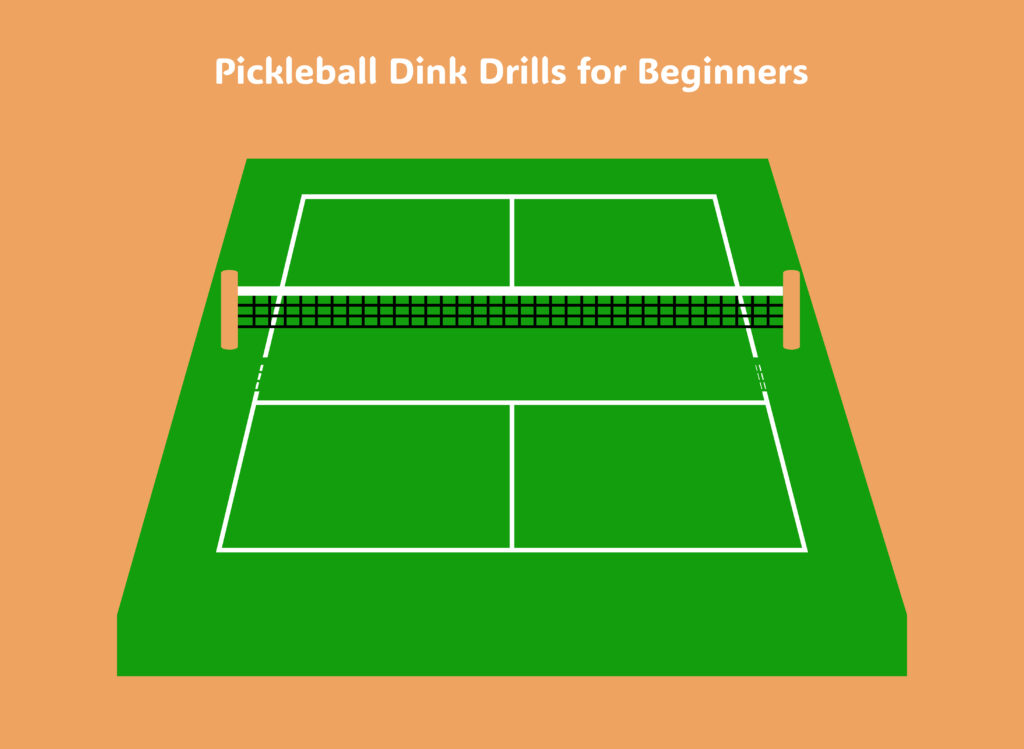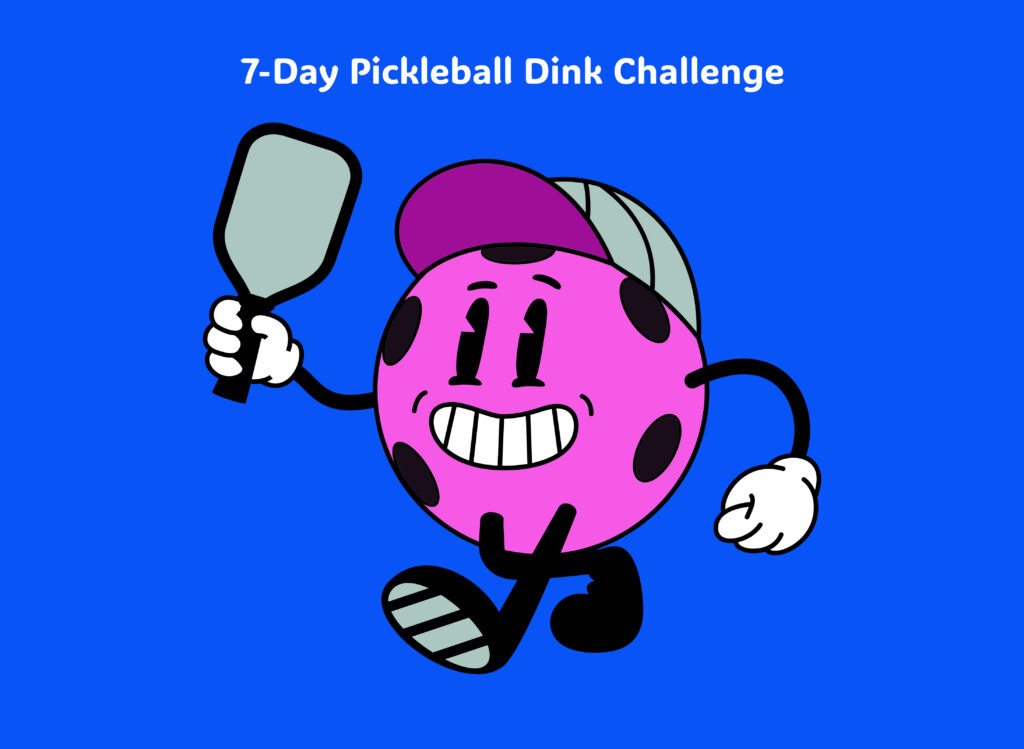- 1️⃣ Focus on Consistency Before Power
- 2️⃣ Aim for Deep Serves to Keep Opponents Back
- 3️⃣ Master the Topspin Serve for More Control
- 4️⃣ Add Sidespin to Make Your Pickleball Serve More Unpredictable
- 5️⃣ Mix Up Your Serves to Keep Opponents Guessing
- 6️⃣ Improve Your Pre-Serve Routine for More Accuracy
- 7️⃣ Use the Serve to Set Up Your Next Shot
- Final Thoughts: Mastering the Pickleball Serve
The Pickleball serve is more about placement, consistency, and strategy. It is one of the most crucial shots to master, setting the tone for each point and giving you the opportunity to take control of the rally. Unlike in tennis, where serves are often about power and spin.
If you are a beginner looking to develop a consistent serve or an advanced player aiming to add variety and deception, improving your serve will make you a more effective and competitive player.
In the UK’s rapidly growing pickleball scene, players are realising that a strong serve can dictate the pace of the game and force weak returns from opponents. This guide will walk you through seven proven ways to improve your serve, helping you develop more accuracy, depth, and strategic placement.
1️⃣ Focus on Consistency Before Power
One of the biggest mistakes players make is trying to serve too hard before mastering consistency. The serve in pickleball is not a weapon like in tennis—it’s about starting the point with control.
How to Develop a Consistent Serve:
✅ Use a smooth and repeatable motion – Don’t rush your swing; a controlled motion leads to fewer errors.
✅ Start with a relaxed grip – Holding the paddle too tightly can reduce accuracy and control.
✅ Aim for 10 out of 10 serves in play – If you can’t consistently serve into the opponent’s service box, slow down and focus on accuracy.
✅ Practice serving to specific targets – Work on landing serves deep in the court rather than just getting them in.
🔥 Key takeaway: A consistent serve puts pressure on your opponent, while an inconsistent serve leads to unnecessary faults and lost points.
2️⃣ Aim for Deep Serves to Keep Opponents Back
A deep serve is one of the most effective ways to gain an early advantage in a rally. The deeper your serve, the harder it is for your opponent to return aggressively and rush the net.
How to Hit a Deep Serve:
✅ Contact the ball in front of your body – This allows you to generate more natural depth.
✅ Use a relaxed follow-through – A smooth motion helps control placement better than an abrupt or forced stroke.
✅ Aim just inside the baseline – The goal is to keep your opponent as far back as possible without hitting out.
✅ Add height to your serve – A higher-arching serve can land deeper and push your opponent further back.
🔥 Key takeaway: A deep serve forces your opponent into a defensive position, reducing their ability to hit an aggressive return.
3️⃣ Master the Topspin Serve for More Control
Adding topspin to your serve makes it dip down quickly after crossing the net, making it harder for your opponent to return aggressively.
How to Generate Topspin on Your Serve:
✅ Swing from low to high – Brush up on the ball with your paddle to create topspin.
✅ Keep the paddle slightly closed – Tilting the paddle forward helps generate more forward spin.
✅ Use a longer follow-through – A smooth finish ensures the ball stays in play.
✅ Aim for a balance between power and control – Too much topspin without accuracy can make your serve unpredictable.
🔥 Key takeaway: A topspin serve helps control shot placement and keeps the ball from floating too high, making returns more difficult for your opponent.
4️⃣ Add Sidespin to Make Your Pickleball Serve More Unpredictable
A sidespin serve can be a game-changer, making the ball curve in the air and bounce away from the opponent’s paddle, forcing weak returns.
How to Execute a Sidespin Serve:
✅ Brush across the ball – Instead of hitting straight through, swing your paddle across the ball in a sideways motion.
✅ Adjust your paddle angle – A slightly open or closed paddle face helps create the desired spin direction.
✅ Use the sideline to your advantage – A well-placed sidespin serve can pull your opponent wide and off balance.
✅ Keep your motion smooth – Jerky or forced movements reduce accuracy.
🔥 Key takeaway: A well-placed sidespin serve disrupts your opponent’s rhythm and forces them into uncomfortable return positions.
5️⃣ Mix Up Your Serves to Keep Opponents Guessing
One of the most common mistakes players make is serving the same way every time, making it easy for opponents to anticipate the return. By varying your serves, you can keep opponents off balance and force them to adjust on the fly.
Ways to Mix Up Your Serves:
✅ Change speeds – Mix fast and slow serves to disrupt your opponent’s timing.
✅ Vary depth and placement – Serve deep most of the time, but occasionally drop in a short serve to catch your opponent off guard.
✅ Alternate between topspin and sidespin – Using different spins makes your serve less predictable.
✅ Target different areas of the service box – Aim for corners, side lines, and deep centre serves to force your opponent into difficult positions.
🔥 Key takeaway: The best players mix up their serves to keep opponents guessing, reducing their ability to return with confidence.
6️⃣ Improve Your Pre-Serve Routine for More Accuracy
Developing a consistent pre-serve routine can help you stay relaxed, focused, and confident before hitting the ball. A good routine eliminates distractions and ensures you start every point with a solid, well-executed serve.
How to Create an Effective Pre-Serve Routine:
✅ Take a deep breath – This helps you relax and reset before serving.
✅ Bounce the ball or adjust your grip – Small pre-serve rituals keep you focused.
✅ Visualise your target – Before serving, decide exactly where you want the ball to land.
✅ Keep a steady tempo – Rushing your serve often leads to unnecessary errors.
🔥 Key takeaway: A consistent pre-serve routine helps you stay mentally focused and improves overall accuracy.
7️⃣ Use the Serve to Set Up Your Next Shot
In pickleball, the serve is not just about starting the point—it’s about setting yourself up for an advantage in the next shot. Whether you’re planning for a third shot drop, drive, or volley, a well-placed serve can put you in control of the rally.
How to Use Your Serve as a Setup Tool:
✅ Serve deep to push opponents back, making it easier to control the rally.
✅ Use spin serves to create weak returns, setting you up for a strong third shot.
✅ Target the opponent’s weaker side, forcing them into an uncomfortable return position.
✅ Be ready to move forward quickly after serving to take control of the point.
🔥 Key takeaway: A great serve doesn’t just put the ball in play—it creates opportunities for you to win the rally.
Final Thoughts: Mastering the Pickleball Serve
A strong, strategic serve can dictate the pace of the game, force weak returns, and give you the advantage in every rally. By focusing on consistency, depth, spin, and placement, you can develop a serve that puts pressure on your opponents and sets you up for success.
Key Takeaways:
✔ Consistency before power – A controlled serve is more valuable than a powerful one.
✔ Deep serves keep opponents back, making their returns weaker.
✔ Adding spin (topspin, backspin, sidespin) makes your serve more effective.
✔ Varying your serves prevents opponents from anticipating returns.
✔ A good pre-serve routine increases accuracy and confidence.
✔ Your serve should set up your next shot, not just start the rally.
👀 Enjoyed this read? Fancy levelling up your game even more? Keep reading Dink Quest for the best pickleball tips, drills, and news in the UK!
🎯 Check out these popular posts next:
📬 Subscribe to the Dink Quest newsletter to Stay in the Loop and be the first to get new blog posts, UK pickleball news, tips, player spotlights and exclusive offers
👉 Click here to subscribe now
Get discounts and exclusive offers for Paddles, clothing and accessories from our shop
We’ve got plenty more where that came from! Whether you’re working on your third shot drop, curious about dinking strategies, or just figuring out how to hold your paddle without it flying across the court we’ve got you covered.
👉 Keep reading, keep learning, and keep dinking smart. Let’s grow the game together, one dink at a time. 💚
See you on the court!
The Dinkquest Team UK 🏓



